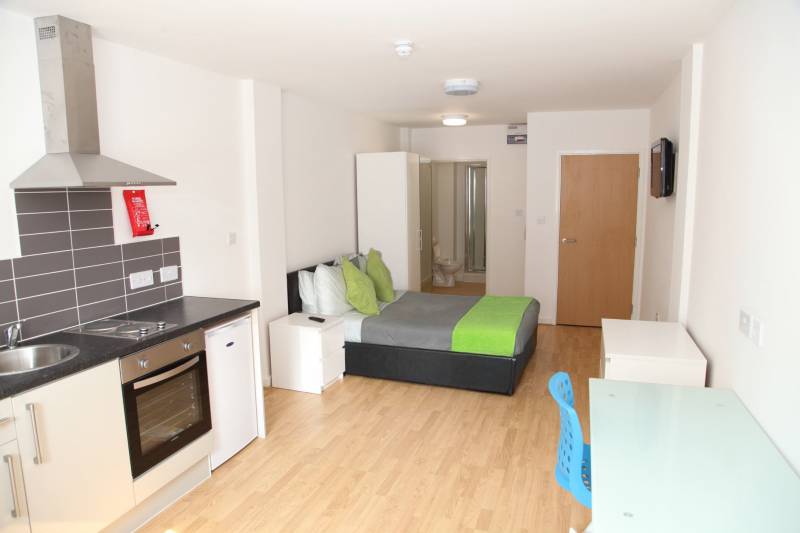Studio flat
A studio flat is a self-contained habitable space in which the living room, bedroom and kitchen facilities are all incorporated into one space, sometimes with partial walls or other forms of divider used to separate the different areas.
A bedroom may be positioned in one corner, while a small kitchen (or kitchenette) may be in another corner, with the space between them allocated as the ‘living room’. The bathroom facilities are typically contained in a smaller room within the flat.
Depending on the building complex, studio flats may also include storage spaces, fold-away beds, garden areas, balconies, and so on. According to London’s planning guidance, the minimum size recommended for a studio flat, is 37 sq. m.
A one-bedroom flat (often referred to as a ‘single flat’ or ‘bedsit’), has separate spaces for the bedroom, living room, and kitchen areas instead of a single multi-purpose room. The similarity between a one-bedroom flat and a studio flat is the separate bathroom space.
In terms of the market, studio flats tend to be targeted at young professionals, graduates and new renters who wish to live in a relatively central urban location at a more affordable rate.
Even smaller micro flats, of as little as 13 sq. m are offered for student accommodation, and as an affordable-rent solution for dense areas of cities such as central London
[edit] Related articles on Designing Buildings
Featured articles and news
RTPI leader to become new CIOB Chief Executive Officer
Dr Victoria Hills MRTPI, FICE to take over after Caroline Gumble’s departure.
Social and affordable housing, a long term plan for delivery
The “Delivering a Decade of Renewal for Social and Affordable Housing” strategy sets out future path.
A change to adoptive architecture
Effects of global weather warming on architectural detailing, material choice and human interaction.
The proposed publicly owned and backed subsidiary of Homes England, to facilitate new homes.
How big is the problem and what can we do to mitigate the effects?
Overheating guidance and tools for building designers
A number of cool guides to help with the heat.
The UK's Modern Industrial Strategy: A 10 year plan
Previous consultation criticism, current key elements and general support with some persisting reservations.
Building Safety Regulator reforms
New roles, new staff and a new fast track service pave the way for a single construction regulator.
Architectural Technologist CPDs and Communications
CIAT CPD… and how you can do it!
Cooling centres and cool spaces
Managing extreme heat in cities by directing the public to places for heat stress relief and water sources.
Winter gardens: A brief history and warm variations
Extending the season with glass in different forms and terms.
Restoring Great Yarmouth's Winter Gardens
Transforming one of the least sustainable constructions imaginable.
Construction Skills Mission Board launch sector drive
Newly formed government and industry collaboration set strategy for recruiting an additional 100,000 construction workers a year.
New Architects Code comes into effect in September 2025
ARB Architects Code of Conduct and Practice available with ongoing consultation regarding guidance.
Welsh Skills Body (Medr) launches ambitious plan
The new skills body brings together funding and regulation of tertiary education and research for the devolved nation.
Paul Gandy FCIOB announced as next CIOB President
Former Tilbury Douglas CEO takes helm.
UK Infrastructure: A 10 Year Strategy. In brief with reactions
With the National Infrastructure and Service Transformation Authority (NISTA).























